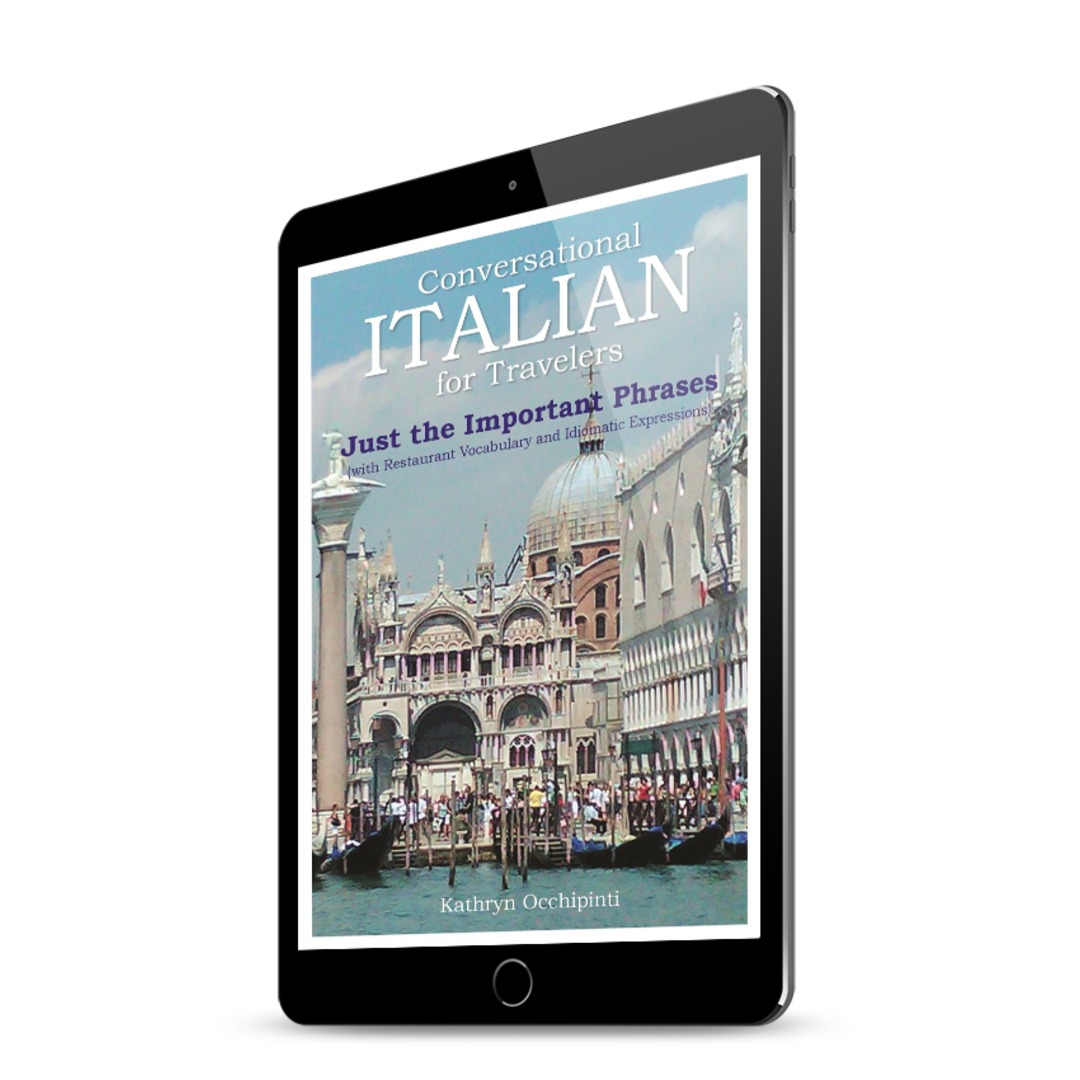We’ve discussed Italian Christmas traditions in December each year since this blog’s inception. As noted before, the Christmas season in Italy lasts from the beginning of December until after the New Year. Below are the important dates to remember for those celebrating Christmas in Italy, along with Italian greetings for each holiday. To follow is the story of La Befana, the friendly Italian witch with gifts for all.
The Italian Christmas Season
| L’Immacolata | Feast of the Immaculate Conception: Catholic holiday that celebrates mother Mary. |
| La Vigilia di Natale Il Natale |
Christmas Eve Christmas |
| Buon Natale! Buone Feste! |
Merry Christmas! Happy Holidays! |
| Auguri di buon Natale! | Best wishes for a merry Christmas! |
| Tanti Auguri! / Auguri! | Best wishes! |
| Il biglietto di auguri Natalizi Il Regalo di Natale |
Christmas greeting card Christmas gift |
| L’ultimo dell’anno | New Year’s Eve |
| La notte di San Silvestro | December 31st is the feast day of San Silvestro for the Catholic church. |
| Il Capodanno | New Year’s Day |
| Buon anno nuovo! Buon anno! |
Happy New Year! (used most often) |
| Felice anno nuovo! | Happy New Year! |
| L’Epifania | Epiphany: Catholic holiday that celebrates when “Wise Men” visited the baby Jesus. In Italy, gifts are exchanged on this day. Italian tradition holds that a friendly witch, La Befana, brings gifts to children on this day, although Santa Claus is also celebrated. |
If you are planning to attend a holiday party with Italian speakers this season, check out some polite phrases of meeting and greeting on our blog, The Holidays in Italy
To welcome guests to your home, remember the simple: Benvenuto! Benvenuta! Bevenuti! and Benvenute! Of course, the ending will change if you want to welcome one male person, one female person, a group of males or males + females and a group of women.
After introductions have been made, the usual reply is:
Piacere di conoscerla. Pleased to meet you. (polite)
Piacere di conoscerti. Please to meet you. (familiar)
And the reply to the above:
Piacere mio. The pleasure is mine.
Some additional phrases to describe the excitement that comes with the Christmas holiday celebrations are found in our last blog about how to celebrate Christmas in Italy: “Mi piace Natale.”
Remember to use “Mi piace” to describe something you like and “A me piace” to emphasize how much you like it! As below:
Mi piace il periodo di Natale!
[To me the Christmas season is pleasing.]
I like the Christmas season!
Mi piace addobbare la casa per Natale.
I like decorating/decking out the house for Christmas.
—- or —-
Ai nostri bambini piace l’arrivo di Babbo Natale, ma a Marco no. Invece, Marco aspetta l’arrivo della Befana.
[Meaning: Our children like when Santa Claus arrives, but Mark doesn’t.]
(Implied: For some strange reason, although Mark is young, he doesn’t mind waiting until after Christmas for La Befana to bring him presents.)
The children like when Santa Claus arrives, but Marco doesn’t. Instead, Mark waits for La Befana to arrive.
As noted in the last example, the tradition of gift-giving during the Christmas season in Italy has changed a bit recently, with some Italian families celebrating the arrival of Santa Claus on Christmas Eve. But many Italian families also continue the tradition of La Befana, the friendly witch, to complete their holiday season in January.
It is said that La Befana flies on her broom on the night before the Epiphany, the Christian holiday that celebrates the day the three kings, or wise men, traveled together to bring gifts to the newborn baby Jesus. Some say Befana is a modern version of the Roman goddess Strina, who bestowed gifts, called strenae, in Latin. It is possible that the name Befana could have been derived from the Latin word strena. Another theory is that the name Befana was derived from the Italian word for this holiday, L’Epifania.
The Story of La Befana
As the story goes, Befana was once an old woman who lived alone in an Italian town. The three wise men passed by her home on their way to see baby Jesus. They asked for lodging, which she provided. But when they asked for her to join them on their journey the next day, she refused. When word gets out about Jesus’ importance, Befana later regrets passing up this opportunity.
With the realization of this loss, Befana becomes a magical witch, destined to travel through the air each year on her broom the night before L’Epifania, searching all of Italy in an attempt to visit the baby Jesus. On her journey, seeking out this one child, she looks into the homes of the many other children and leaves a present before departing one house to continue her quest.
Of course, this is a similar idea to Santa Claus, who also travels by night and brings presents for the family earlier in the season, on Christmas Eve. In return for Befana’s hospitality, families may leave a glass of wine and even a plate of sausages and broccoli to sustain her on her trip. Although beware! Those who have not been good, children and adults alike, may receive coal (carbone), an onion (cipolla), or garlic (aglio) in their stockings from the friendly witch named Befana!
Celebrating La Befana in Italy
On Epiphany, it is customary for Italian families to attend church and then get together to continue the celebration with a meal and gifts for the children. Often one of the adults — female or male — will dress in La Befana rags and hat and give out small presents from a sac, accompanied by a bit of clowning for the entertainment of all. The town of Urbania, high up in the mountains in the Marche region of Italy, takes the Befana dress-up festivities to their fullest extent. On the day of the Epiphany, hundreds of men and women alike dress up as La Befana and occupy the main piazza of the town, creating one last festival before the Christmas season comes to an end.
In Rome, a giant replica of La Befana is placed a the piazza by the Colosseum and lit up at night.
In Venice, there is a boat race on Epiphany (of course), called La Regata delle Befane, or Race of the Befanas. To take part in this race, the (male) rowers must dress up in a raggedy dress and shoes like La Befana. Each year, the race is limited to five rowers who steer their Gondolas down the Grand Canal. Thousands of locals and tourists line up to see the short sprint between the curve in the Grand Canal and the Rialto Bridge. Stalls along the piazza offer free drinks and candy or the onlookers.
The Befana Tradition Continues
Shops throughout Italy display many items with the La Befana character during Christmastime— cards, dolls and figurines of all sizes — which is a testament to the attraction the Befana tradition still holds for Italians today.
Many children’s books tell the La Befana story. Perhaps the most well-known and beautifully illustrated book is The Legend of Old Befana: An Italian Christmas Story, by Tomie dePaola (Italian-American Thomas Anthony dePaola,1934-2020). In fact, Tomie dePaola was honored this past May, when the United States Postal Service issued a forever stamp with his name with a picture of Strega Nonna, a character who looks very similar to his La Befana. The version of the La Befana story by dePaola is in English but of course, there are many Italian versions as well. This story may be an entertaining way to introduce Italian to the children in your family!
Young children in Italy not only read about La Befana,
but they also listen to cheerful, catchy, songs about her story.
The first stanza of these songs is always taken from the well-known La Befana nursery rhyme (filastrocca). The Italian for this nursery rhyme with an English translation is below.
| La Befana vien di notte |
| The old lady Befana comes at night |
| Con le scarpe tutte rotte |
| Wearing worn out shoes |
| Col vestito alla romana. |
| Dressed in Roman style. |
| Viva viva la Befana! |
| Long live Befana! |
To get into the Italian holiday spirit, listen to an Italian song about La Befana on a cartoon video on You Tube from Lucilla & La Brigata Canterina: https://www.youtube.com/watch?v=FJqwa6BEf4M .
After hearing her song,
I’m sure you will join the Italian children in saying:
“Viva viva La Befana!”
Buon Natale a Tutti Voi!
For “All the Italian you need to enjoy your trip to Italy” click on the links for my Conversational Italian for Travelers books -Kathryn Occhipinti


 Fra Noi Embrace Your Inner Italian
Fra Noi Embrace Your Inner Italian






